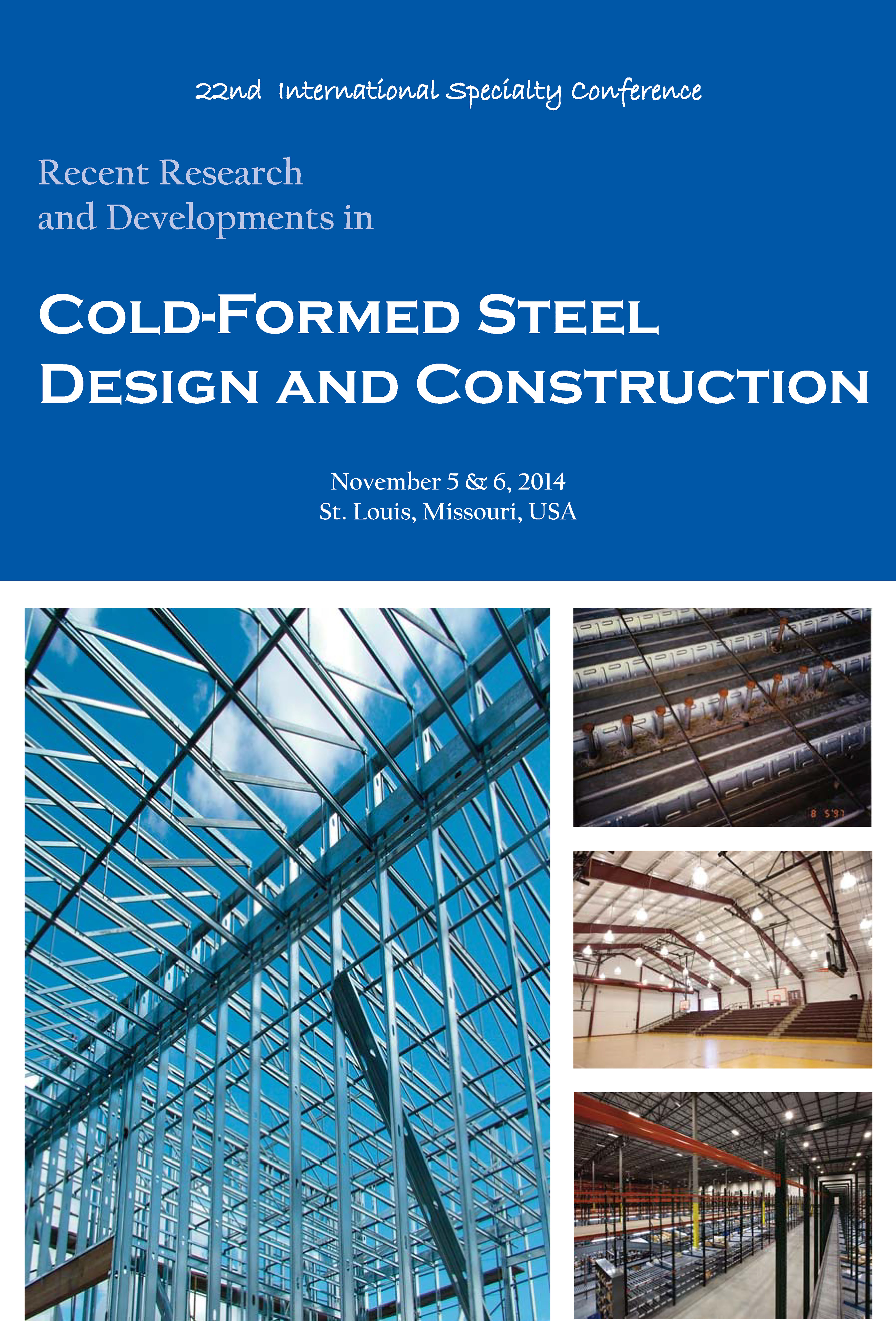Session Dates
05 Nov 2014
Abstract
The Direct Strength Method (DSM) of design of cold-formed sections has recently been extended in the North American Specification for Cold-Formed Steel Structural Members-NAS S100:2012 to include shear. The two new features of the DSM rules for shear researched are the effect of full-section shear buckling as opposed to web-only shear buckling and Tension Field Action (TFA). The prequalified sections in the rules include sections with flat webs and webs with small intermediate longitudinal stiffeners. In order to extend the range to larger intermediate stiffeners as occurs in practice, a series of fourteen shear tests have been performed at the University of Sydney for C-sections with rectangular stiffeners of varying sizes. Six different types of stiffeners were tested with an additional preferred plain section. Each type of sections was tested twice to ensure accuracy. As the web stiffener sizes increase, the shear buckling and strength of the sections are expected to improve accordingly. However, the tests show that the shear ultimate strengths only increase slightly in association with the respective increase of stiffener sizes. The test results are compared with the DSM design rules for shear and found to be lower than those predicted by the DSM curve for shear with TFA. The test failures were observed mainly due to the combined bending and shear modes. The effect of the bending is therefore significant and starts to govern when the shear capacity is significantly strengthened by adding the large longitudinal web stiffener. The test results are subsequently plotted against the DSM interaction curves between bending and shear where the interaction is found to be significant. Modifications and recommendations for prequalified sections with longitudinally stiffened web channels in shear are proposed in the paper.
Department(s)
Civil, Architectural and Environmental Engineering
Research Center/Lab(s)
Wei-Wen Yu Center for Cold-Formed Steel Structures
Sponsor(s)
Australian Research Council
Meeting Name
22nd International Specialty Conference on Cold-Formed Steel Structures
Publisher
Missouri University of Science and Technology
Document Version
Final Version
Rights
© 2014 Missouri University of Science and Technology, All rights reserved.
Document Type
Article - Conference proceedings
File Type
text
Language
English
Recommended Citation
Bruneau, Luciano A.; Pham, Cao Hung; and Hancock, Gregory J., "Experimental Study of Longitudinally Stiffened Web Channels Subjected Predominantly to Shear" (2014). CCFSS Proceedings of International Specialty Conference on Cold-Formed Steel Structures (1971 - 2018). 7.
https://scholarsmine.mst.edu/isccss/22iccfss/session03/7
Experimental Study of Longitudinally Stiffened Web Channels Subjected Predominantly to Shear
The Direct Strength Method (DSM) of design of cold-formed sections has recently been extended in the North American Specification for Cold-Formed Steel Structural Members-NAS S100:2012 to include shear. The two new features of the DSM rules for shear researched are the effect of full-section shear buckling as opposed to web-only shear buckling and Tension Field Action (TFA). The prequalified sections in the rules include sections with flat webs and webs with small intermediate longitudinal stiffeners. In order to extend the range to larger intermediate stiffeners as occurs in practice, a series of fourteen shear tests have been performed at the University of Sydney for C-sections with rectangular stiffeners of varying sizes. Six different types of stiffeners were tested with an additional preferred plain section. Each type of sections was tested twice to ensure accuracy. As the web stiffener sizes increase, the shear buckling and strength of the sections are expected to improve accordingly. However, the tests show that the shear ultimate strengths only increase slightly in association with the respective increase of stiffener sizes. The test results are compared with the DSM design rules for shear and found to be lower than those predicted by the DSM curve for shear with TFA. The test failures were observed mainly due to the combined bending and shear modes. The effect of the bending is therefore significant and starts to govern when the shear capacity is significantly strengthened by adding the large longitudinal web stiffener. The test results are subsequently plotted against the DSM interaction curves between bending and shear where the interaction is found to be significant. Modifications and recommendations for prequalified sections with longitudinally stiffened web channels in shear are proposed in the paper.




Comments
Funding provided by the Australian Research Council Discovery Project Grant DP110103948 has been used to perform this project.